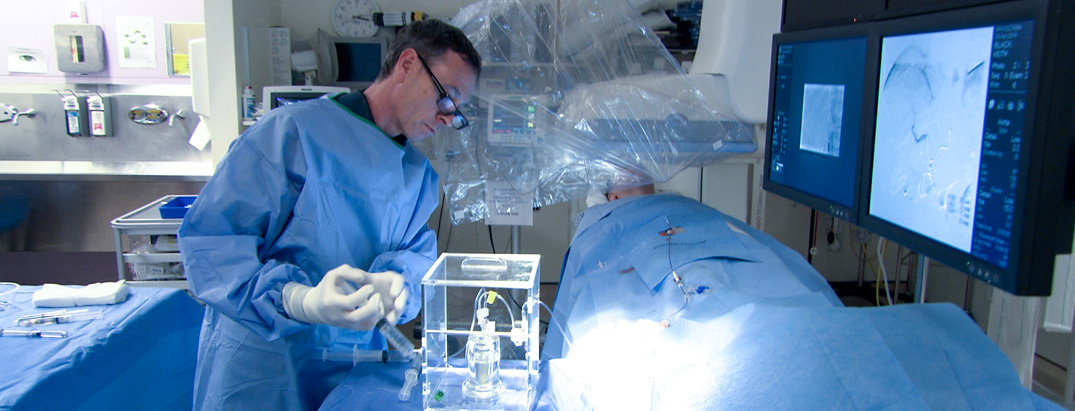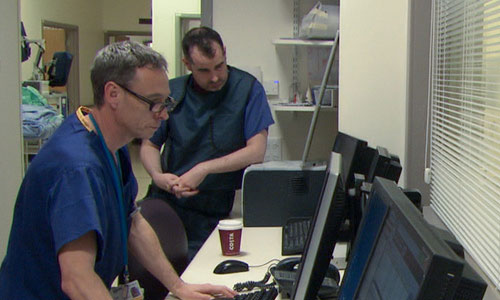
Selective Internal Radiotherapy Therapy (SIRT) is a form of radiation therapy that involves injection of microspheres loaded with a radioactive substance (Yttrium-90) through a fine catheter which is inserted from the femoral artery in the groin and manipulated using x-ray guidance to the artery that feeds the liver (hepatic artery). This procedure is performed using local anaesthetic in the groin by an Interventional Radiologist in an Angiography Suite in a hospital x-ray department. An Interventional Radiologist is a Doctor specialised in minimally invasive treatments using Imaging guidance.
The whole treatment entails two separate angiographic procedures, usually about a week apart. The first procedure (sometimes called the 'Workup Procedure') is to assess the anatomy of the arterial supply to the liver and potentially occlude small interconnections between the liver arteries and arteries to other organs, particularly the stomach, the gut and the pancreas. Occluding these non-essential vessels will stop any radioactive particles getting to and potentially causing damage to those organs. Once this is done, a very small amount of radioactivity is injected through the catheter in the hepatic artery. This is not a treatment but this radioactivity is a 'surrogate' of the actual treatment in order to measure how much of the therapy dose will pass through the liver into the lungs. This measurement is performed immediately after the angiogram is finished using a scanner in the Nuclear Medicine department. If more than 20% of the radioactivity enters the lungs, then the therapy cannot proceed in the normal way because of the risk of radiation damage to the lungs.
The actual therapy is usually performed the following week with a repeat angiographic procedure, during which time the therapeutic dose of radiation particles is injected slowly through the catheter in the hepatic artery. This can be associated with some abdominal discomfort because of the number of particles injected, but responds readily to simple pain relief medications. Time spent in hospital for this treatment is usually minimal (on average, 8-24 hours). In some centres, it is routine for the angiographic procedure to entail an overnight hospital stay, but that does depend on what time of day the procedure is performed. Once the treatment has been administered, the patient will be warned that they will be emitting low levels of radiation for about a week. Before discharge, standard advice will therefore be given to ensure that family members or visitors do not receive any significant radiation dose from the patient, though the risks of this are minimal as long as the simple precautions are followed.

There is a restricted access forum for all clinicians involved in the SIRT procedure to help share best practice and experiences. If you have or you would like to share your experiences or you want to find out more about the procedure and the latest clinical developments, please join our community.
Click here to join or sign-in

There is a designated site for SIRT patients, their families and carers called My SIRT Story.
Click here to find out more
